Crow Garlic
Crow Garlic is another native plant of the onion family. It looks very similar to Chives and it is used in similar manner.
| Hedgerow Type | |
| Common Names | Crow Garlic, Wild Onion |
| Scientific Name | Allium vineale |
| Season Start | Nov |
| Season End | Aug |
Leaves
Very similar to chives, long and hollow, cylindrical or semi-cylindrical. Can be hard to spot among tall grass. The leaves die back before the flowering stems emerge in late Spring.
Flowers
The flower heads appear in June and are initially covered with a papery sheath. This cover soon falls showing a round umbel combining greenish to purple bulbils and pink flowers. Very often it features only bulbils, but varieties with flowers only can also be found.
Flower Stem
The flowering stem emerges in late Spring after the the leaves have died back. It is usually tough and fibrous.
Seeds
Not technically seeds, the bulbils that compose the flower heads are like tiny bulbs and can be sprouted.
Roots
The bulbs are ovoid looking like a very small onion. They can be used but only if you have permission from the landowner to dig and uproot plants.
Habitat
Grassland, including meadows, coastal cliffs, hedgerows, roadsides, parks and also among cereal crops.
Possible Confusion
It can be difficult to spot among tall grass. It is distinguished from grasses by its onion smell.
It is very similar to chives and easily confused before flowering, but that would be harmless as both plants have similar culinary value.
Smell
Like onion.
Taste
Somewhere in between onion, garlic and chives.
Frequency
Common throughout Britain, very frequent in Southeast England, but more rare and only coastal in Northern Scotland.
Collecting
The leaves are collected and used like chives. They are better in late Winter and early Spring, becoming rougher and less pleasant after.
The bulbils can be gathered and used fresh or air dried as a crunchy seasoning, or even sprouted for salads.
If you have permission from the landowner to uproot you may use the small bulbs which taste like a garlicky onion.
Medicinal Uses
Like other Alliums it may help reduce blood pressure.
Other Facts
It is unwanted by farmers as it grows in pasture spoiling the taste of milk or mixed among cereals contaminating the crop.



 (27 votes, average: 3.56 out of 5)
(27 votes, average: 3.56 out of 5)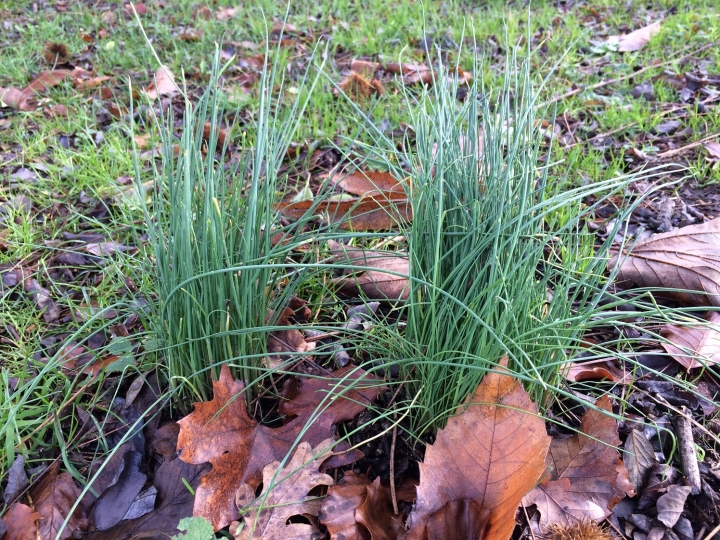
















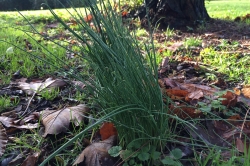
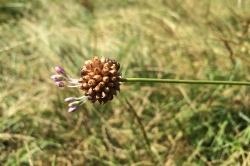
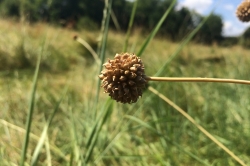
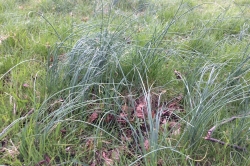
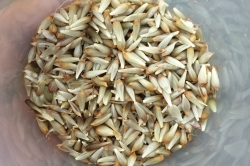





7 comments for Crow Garlic
When should you harvest the bulbils?
When you can see them and before they dry out.
To grow them, allow them to dry out and turn brown. I think this was late summer/autumn. They can then easily be popped off the seed head like grain. They can be planted and grown like like chives. I’ve not tried eating them yet, mine are a bit overcrowded in a seed trays and still quite small (January), but the germination rate seems high. Got a surprising quantity off only a few flower heads.
We found Crow Garlic all over the garden when we moved in last January. We have tried digging up the small bulbs where it would not disturb other plants, but it has come back. Although we love both garlic and chives this is a real problem. Any suggestions how to get rid of it would be welcome, and anyone (in S Devon) who would like some – we have lots to spare.
I had similar problem with invasive blue bells a few years ago. What I found most effective was applying Charles dowding’s no dig method through thick mulching. Despite there are hundreds of bulbs in the garden, I only need to weed the top a few minutes a week in the spring to stop its growth. Charles put up a lot videos on YouTube, see if this works for you.
This is really invasive in the garden (allium vineale)… like three cornered leek (Allium triquetrum) l prefer to forage them elsewhere than introduce into my garden!
To say these two are ‘prolific’ is an understatement and if you change your mind after introducing them it will take years of vigilant work to eradicate.
It’s a surprise to read that Viv, which part of the country are you based? I usually find it all over Surrey and some places in Sussex, while it never fails to come back it doesn’t seem spread or take over where I find it, it even seems to struggle with the competition of other plants. Obviously the same can’t be said about three cornered leek! But unlike three cornered leek which is a scheduled non-native invasive, crow garlic is one of our native plants, so I’m always happy to find it.